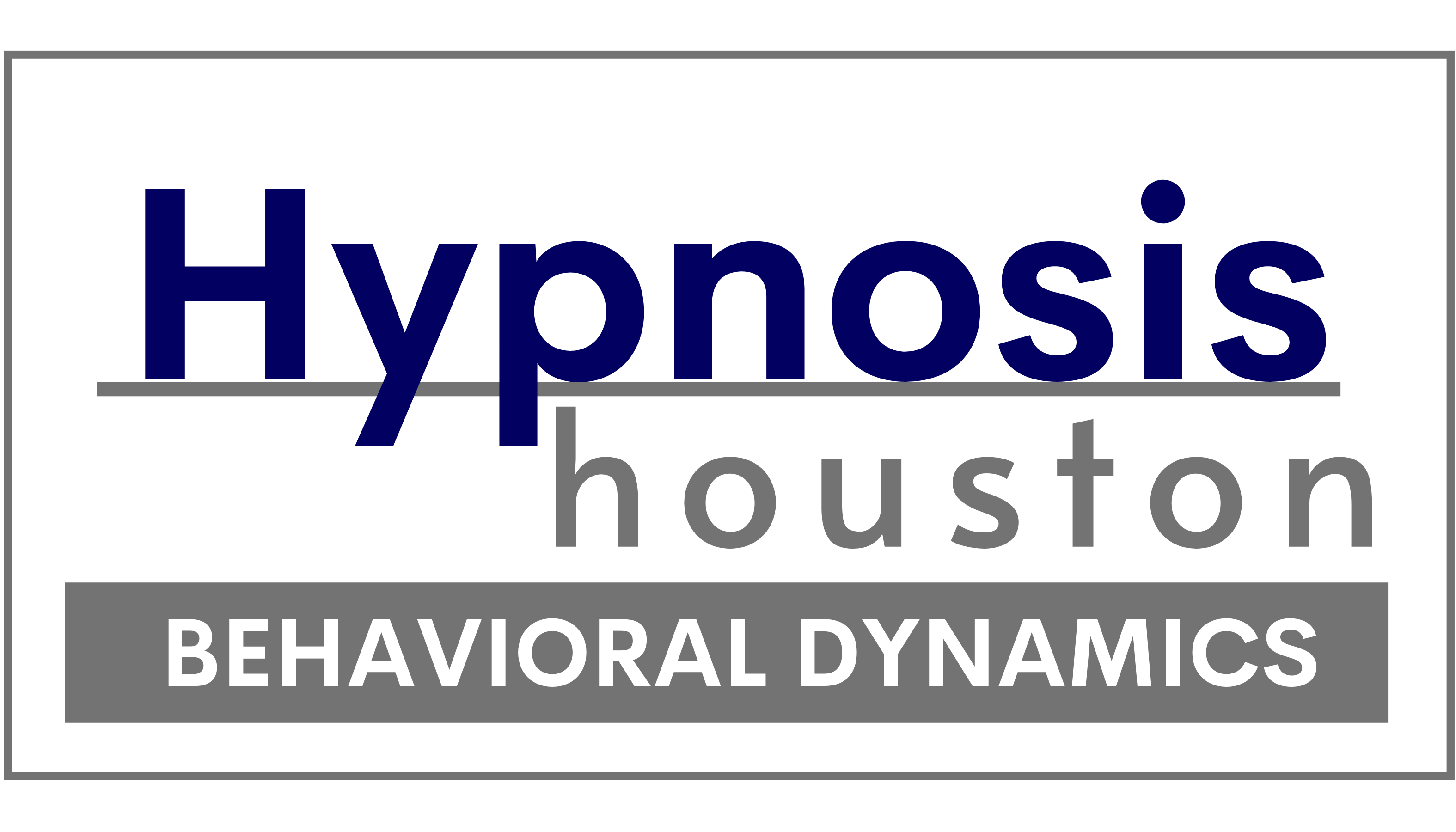How Hypnosis Can Help with Panic Attacks
 Are you someone who is struggling with frequent panic attacks? If so, you’re likely seeking relief, as these intense fear and discomfort episodes can be incredibly debilitating. While there are traditional treatments like cognitive-behavioral therapy and medications that can help manage anxiety related to panic attacks, another option that many turn to is hypnosis. Hypnosis has long been used for relaxation purposes. Still, now it’s gaining attention in the mental health space for its ability to reduce anxiety symptoms and offer deep feelings of calm. In this post, we’ll explore how hypnosis works and how it can be used as an effective tool for treating panic attacks.
Are you someone who is struggling with frequent panic attacks? If so, you’re likely seeking relief, as these intense fear and discomfort episodes can be incredibly debilitating. While there are traditional treatments like cognitive-behavioral therapy and medications that can help manage anxiety related to panic attacks, another option that many turn to is hypnosis. Hypnosis has long been used for relaxation purposes. Still, now it’s gaining attention in the mental health space for its ability to reduce anxiety symptoms and offer deep feelings of calm. In this post, we’ll explore how hypnosis works and how it can be used as an effective tool for treating panic attacks.
Causes of Panic Attacks
Panic attacks are sudden episodes of intense fear or discomfort that can cause physical symptoms such as rapid heart rate, shortness of breath, dizziness, and sweating. Here are some common causes of panic attacks:
- Personal History: A history of trauma, abuse, or significant life stressors can contribute to developing panic attacks. These experiences may cause an individual to be more sensitive to stress and anxiety.
- Genetics: Research suggests that there may be a genetic predisposition to panic attacks and anxiety disorders. You may be at a higher risk if a close family member has experienced panic attacks.
- Environmental Factors: Chronic stress, exposure to traumatic events, and significant life changes can trigger panic attacks in susceptible individuals. Substance use and withdrawal from certain medications can also contribute to panic attacks.
- Medical Conditions: Some medical conditions, such as hyperthyroidism, heart problems, or asthma, can cause symptoms similar to panic attacks. It’s essential to consult with a healthcare professional to rule out any underlying medical issues.
The Benefits of Hypnosis for Panic Attacks
Hypnosis is an alternative therapy that can reduce stress and anxiety symptoms. It involves inducing a state of relaxation in the patient by using guided imagery, deep breathing exercises, and suggestions to focus on calming thoughts. Hypnosis is particularly effective for reducing panic attack symptoms due to its ability to induce a sense of calm.
Studies have shown that hypnosis can help individuals manage their fear and anxiety associated with panic attacks by reducing the physical symptoms experienced during these episodes. The relaxation techniques used in hypnosis can also help decrease an individual’s perception of distress, allowing them to better cope with their emotions and experiences. Additionally, hypnosis is an effective tool for helping individuals identify triggers of panic attacks, which can help them better manage symptoms in the future.
Overall, hypnosis can be a safe and effective way to reduce anxiety associated with panic attacks. While it is not intended to replace traditional treatments like cognitive-behavioral therapy or medications, it can be used as an additional tool for managing symptoms.
If you are considering hypnosis to reduce your panic attack symptoms, speaking with a qualified hypnosis professional is essential to determine if this is the right treatment for you. A qualified hypnotherapist can help guide you through the process and provide support throughout your journey.
Identifying Triggers That Lead to Panic Attacks
Living with panic attacks can be a daily struggle, and identifying triggers that lead to them can be daunting. It’s important to remember that triggers can vary from person to person, and identifying yours can take time. Some common examples of triggers include loud noises, certain smells, being in crowded places, and stressful situations. Once you have identified your triggers, creating a plan for managing symptoms when they arise is crucial.
Hypnosis works by helping individuals access their subconscious mind, where thoughts, feelings, and memories reside that may not be available through conscious awareness.
When an individual is in a relaxed, trance-like state under hypnosis, they can tap into memories and experiences associated with panic attacks and gain greater insight into what triggers these episodes. This insight can then be used to create personalized coping strategies for managing future episodes of anxiety.
Employing Relaxation Techniques During a Panic Attack
Relaxation techniques are effective in dealing with panic attacks because they help reduce the intensity of anxiety and stress, which are common triggers for these episodes. When experiencing a panic attack, your body’s fight-or-flight response is activated, leading to physical symptoms such as rapid heart rate, shortness of breath, and sweating. Relaxation techniques work by counteracting this response and promoting a state of calm and well-being. Here’s how different relaxation techniques work for dealing with panic attacks:
- Deep Breathing: During a panic attack, your breathing becomes shallow and rapid. Deep breathing exercises involve taking slow, deep breaths to help regulate your breathing and encourage your body to relax. It helps reduce the intensity of physical symptoms and can provide a calming effect on the mind.
- Progressive Muscle Relaxation (PMR): PMR involves systematically tensing and relaxing different muscle groups. By focusing on releasing tension from your muscles, you can promote relaxation and reduce the physical symptoms of a panic attack. Additionally, concentrating on this technique can help distract your mind from anxious thoughts.
- Mindfulness Meditation: Mindfulness meditation encourages you to focus your attention on the present moment without judgment or attachment. By practicing mindfulness during a panic attack, you can acknowledge your thoughts and feelings without becoming overwhelmed. This can help reduce the intensity of anxiety and foster a sense of control over your emotions.
- Guided Imagery: Guided imagery involves visualizing a peaceful, calming scene in your mind. This technique can help shift your focus from the panic attack to something more positive and soothing. Engaging all of your senses in the visualization process can create a more immersive experience that further promotes relaxation.
- Grounding Techniques: Grounding techniques help you reconnect with the present moment and your immediate surroundings during a panic attack. These techniques can include focusing on the sensation of your feet touching the ground, holding a familiar object, or concentrating on your breath—grounding techniques work by anchoring you to the present and providing a sense of stability and control.
Practicing Self-Hypnosis to Prevent Panic Attacks in the Future
Panic attacks can be overwhelming and scary experiences. They can leave you feeling out of control and anxious about when the next one will strike. Self-hypnosis can effectively prevent panic attacks by promoting relaxation, reducing anxiety, and strengthening your ability to cope with stress. Here’s a step-by-step guide on how to use self-hypnosis to prevent panic attacks:
- Find a quiet, comfortable space: Choose a place to sit or lie down without distractions. Ensure that you feel safe and comfortable in this environment.
- Close your eyes and focus on your breath: Take slow, deep breaths through your nose and out through your mouth. Pay attention to the sensation of your breath as it enters and leaves your body.
- Relax your body: Starting from your head and moving down to your toes, consciously relax each muscle group one by one. This process will help you enter a deeper state of relaxation, crucial for effective self-hypnosis.
- Induce a hypnotic state: To enter a state of self-hypnosis, imagine yourself descending a staircase or escalator, counting down from 10 to 1 with each step. With every number, feel yourself becoming more relaxed and focused.
- Create positive affirmations: Once you’ve reached a state of deep relaxation, repeat positive affirmations to yourself, such as “I am calm and in control” or “I can handle any situation with ease.” These affirmations can help reprogram your subconscious mind and build a sense of confidence in managing stress and anxiety.
- Visualize handling stressful situations: Picture yourself in various scenarios that might trigger a panic attack, and imagine yourself remaining calm and in control. Visualizing your success in handling these situations reinforces your ability to cope with stress and anxiety effectively.
- Reinforce your affirmations and visualization: As you continue to visualize yourself handling potential triggers, repeat your positive affirmations to strengthen further your subconscious belief in your ability to prevent panic attacks.
- Gradually return to your surroundings: When you feel ready, slowly bring your awareness back to your surroundings. Count from 1 to 10 as you ascend the imaginary staircase or escalator. Open your eyes and take a few deep breaths, feeling more confident in your ability to prevent panic attacks.
- Practice regularly: Like any skill, regular practice makes self-hypnosis more effective. Aim to practice this technique daily or at least several times weekly to maximize its benefits.
Conclusion
Hypnosis can be a powerful tool for managing panic attacks and preventing them in the future. By promoting relaxation, reducing anxiety, and providing insight into your experiences, hypnosis can help you take control of your symptoms and improve your overall well-being. With the help of a qualified hypnotist and using different hypnosis techniques, individuals can develop effective strategies for dealing with panic attacks.
Hypnosis Houston
2323 S Voss Rd #675
Houston TX 77057
Phone: (713) 789-0713
https://www.hypnosishouston.com/
